Need some breading for your chicken or a cup of flour for your favorite brownies? If you're all out, these flour substitute ideas are here to save the day!
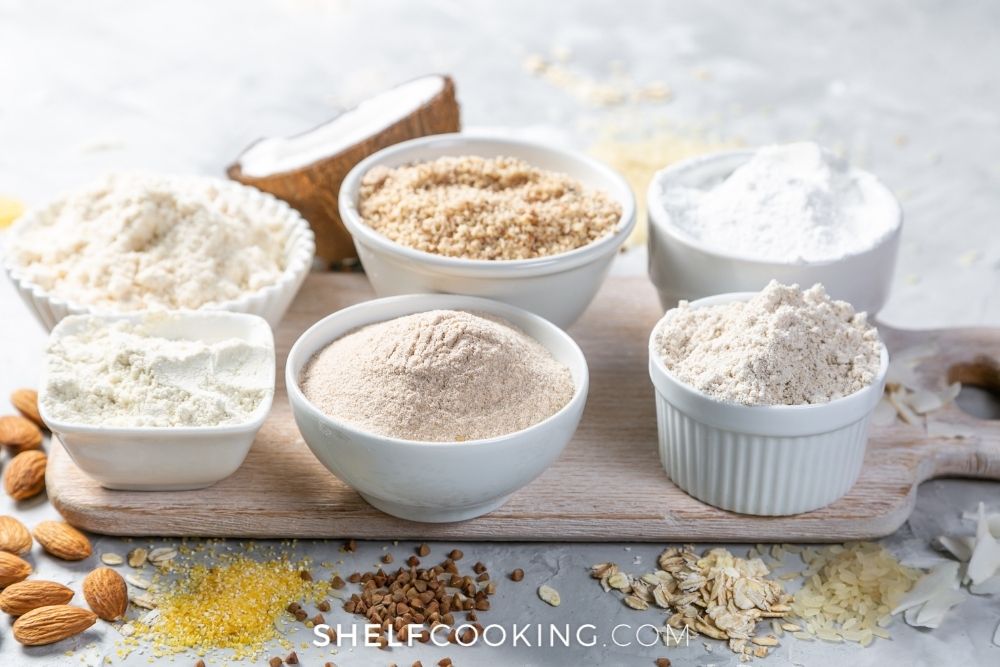
Flour is a pantry staple, but we all run out from time to time. And if you're new to gluten-free living, you might be looking for some ingredients swaps so you can still enjoy your favorite recipes.
*Note: When you click the links in this post, we may receive a commission at no extra cost to you.
No matter the reason you need one, we've got a flour substitute option for you! From frying to baking, we'll show you how to swap in another ingredient if you need to. Ready to do this?!
FLOUR SUBSTITUTES FOR BREADING/BATTER
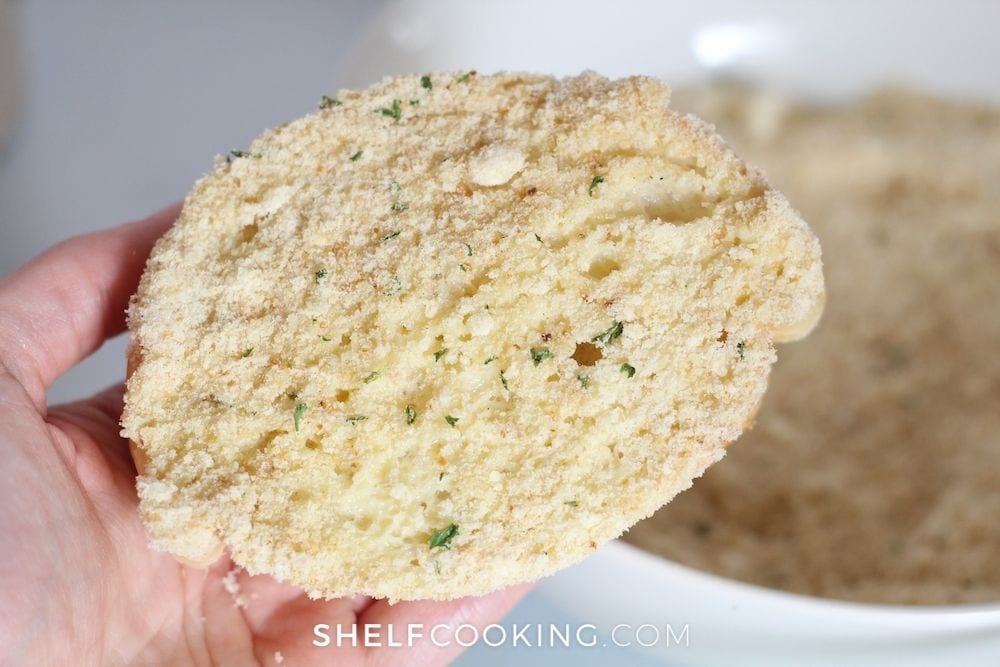
Are you planning a fish fry or whipping up some fried pork chops tonight? Before you rush to the store for more flour, try one of these substitutes:
- Panko Bread Crumbs – Is there anything you can't do with panko bread crumbs?! Fry that chicken or those zucchini rounds in panko instead of flour.
- Cracker Crumbs – Ritz? Saltines? Either way works! Crush those crackers, dredge your meat or fish in some egg, then coat in the cracker mixture and top with a little melted butter before sauteing, broiling, or frying.
- Crushed Cereal – Here's the perfect way to put your leftover cereal crumbs to work! Place them in a plastic bag and hammer them into crumbs, or toss them in the food processor and then coat away. We suggest cornflakes or rice krispies!
- Cornstarch – If you're breading chicken or pork, try a Korean-style batter. First, dredge your meat in an egg wash. Next, mix two parts cornstarch, one part water, and some salt and pepper, and coat your egg-dipped protein in that batter before frying.
- Leftover Chips – Have leftover tortilla chips or stale potato chip crumbs? Use them to coat your meat before frying!
Now you're all set for frying, but what about baking? Oh, we've got more ideas for you, so keep on reading!
BAKING? HERE ARE SOME FLOUR SUBSTITUTE IDEAS
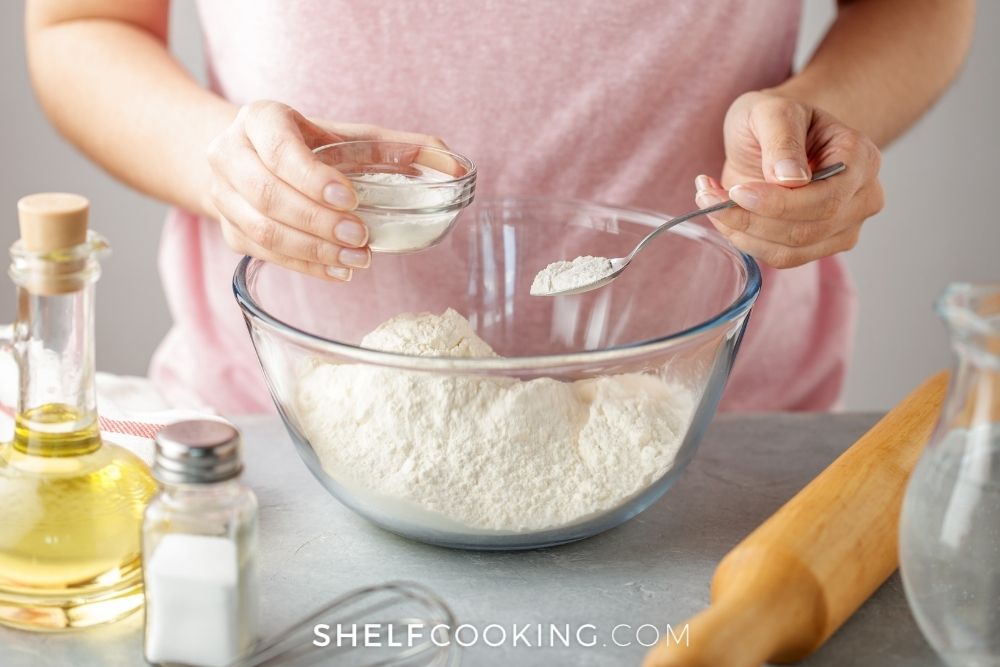
Whipping up some pancakes, brownies, or cookies? Try these flour substitutes:
- Bisquick – All out of flour but stocked up on Bisquick? It makes a great flour substitute! Just use it in a one-to-one ratio. (P.S. Get some great Bisquick substitutes and a homemade recipe here!)
- Bread Flour + Cake Flour – If you have bread flour and cake flour on hand, combine them in equal parts to make a flour substitute. If you measure by volume (with a measuring cup or spoon), be sure to spoon in and level off to get the ratios right.
- DIY Rice Flour – If you have some white or brown rice in the pantry and a food processor on hand, you can make a quick batch of rice flour. Just grind or blend until you achieve a powdery flour-like consistency. This option just so happens to be gluten-free, too!
- Potato Flakes – If you're baking biscuits or bread, you can use 1-2 tablespoons of dry potato flakes (aka instant mashed potatoes) in place of every cup of flour.
- Jiffy Baking Mix – Have a box of Jiffy baking mix on hand? Swap that in using a one-to-one ratio!
- Boxed Cake Mix – We love using boxed cake mix to make cookies! It's a great flour alternative for baking. Brownie mix works well, too.
Eleven flour substitutes down, and a few more to go! Need some gluten-free options? They're coming up next.
3 GLUTEN-FREE FLOUR SUBSTITUTES
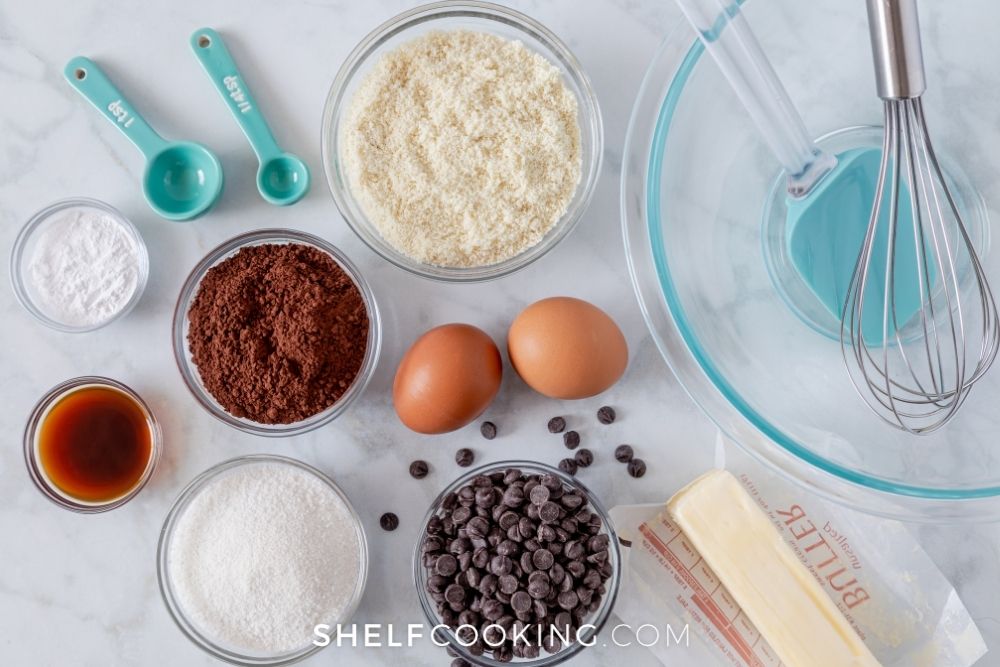
Baking or cooking for a gluten-free crowd? Here are three flour alternatives to try, along with tips for making the substitution seamless:
- Almond Flour – If you're making cookies, cakes, muffins, or biscuits, almond flour is a great gluten-free option. Just use 3/4 cup in place of every one cup of flour.
- Coconut Flour – Coconut flour absorbs a lot of moisture during baking, so if you use it, be sure to add two extra tablespoons of liquid for every two tablespoons of coconut flour.
- Oat Flour – If you've got oatmeal in the pantry, you can turn it into flour! Just pop it in the blender and pulse until powdery. It's a lot lighter than all-purpose flour, so you'll need to use more, and it works best in recipes that call for eggs. The general rule of thumb is to use about 40% more oat flour than the all-purpose flour your recipe calls for. Here's an example: if your recipe calls for 1.25 cups of flour, you'd add half a cup for a total of 1.75 cups of oat flour.
You can buy oat flour, too, but it's way cheaper to make your own, so give it a go if you're trying to eat gluten-free on a budget!
WHAT'S YOUR GO-TO FLOUR SUBSTITUTE?
Now you've got more than a dozen options ready to rescue your next batch of cookies or fried chicken!
Did we leave out your go-to flour substitute? If you've got more tips to share, please leave us a comment below!
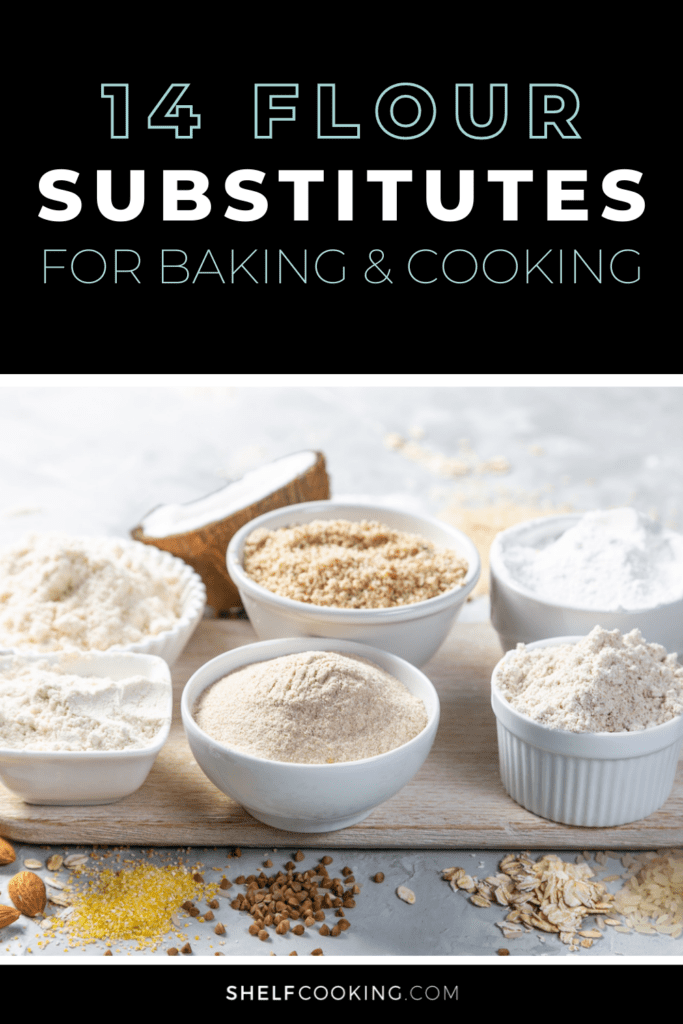
Looking for more recipe substitution tips?
- Here are four brown sugar substitutes to try!
- If you need a baking soda substitute, try these.
- Check out these 30+ recipe substitutions and hacks that every cook needs!
Flour power! ✌️

Cocoa powder is an excellent flour substitute (not a 1:1 replacement, but can be combined with other flours in a ratio larger than the usual amount for a chocolate cake or brownies). It’s low-fat, low-carb, and an excellent source of minerals and fiber, all in one amazingly tasty ingredient!